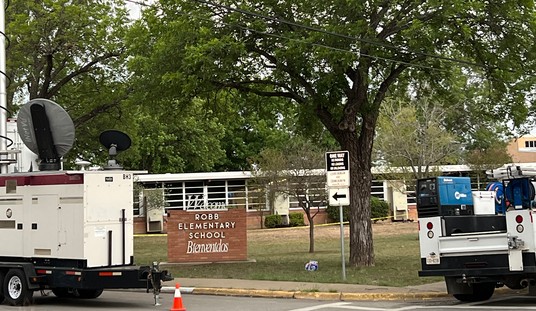It could have been worse, but the impact of Hurricane Irma on Florida will almost certainly still qualify as the worst storm in the state’s history. As of last night, 13 million Floridians had lost electrical power — a stunning 62% of the state’s population. It may be a while before many of them get their lights back on, too:
Hurricane Irma left a trail of damage across South Florida: flooded streets, downed trees, crushed cars, collapsed cranes, leaky homes. The long slog of assessing the damage across the region began Monday. Miami-Dade and Broward counties were spared the worst of the storm, but the Florida Keys were hit hard. Ten people were declared dead in Cuba. Now, Jacksonville is flooding. …
More than 62 percent of the state — an estimated 13 million Floridians — remained without power as of 6 p.m. Monday, the Emergency Operations Center said Monday evening.
Of 10.5 million customers statewide, 6.5 million were still out, according to state emergency management officials.
While outages are typically reported in terms of a number of customers, a graphic displayed at the state Emergency Operations Center, as of 6:30 p.m., reported that 13 million individuals were estimated without power, with the worst outages in southwest Florida.
“Customers” refers to accounts for a business or household, which the state of Florida converted to population to get the 13-million estimate. Either way, it’s a staggering figure, and one that gives a sense of the scale of damage and destruction. That affects more than just the lights, but lights do give a measure of what was lost (via Twitchy):
FLORIDA POWER OUTAGES – Check out the difference in lights on a normal night vs last night for S. Florida. #Irma. Courtesy NOAA JPSS/CIMSS pic.twitter.com/UUpRr7SSDt
— Andrew Buck Michael (@AndrewWSYX6) September 11, 2017
The images demonstrate the shift in the storm in its last few hours before striking Florida. Miami had been expected to take the brunt of Irma, but it instead hit the western shore hardest. Miami still had some power after the storm passed, but the Gulf side has a near-total blackout.
The power outages will last for weeks in some places, exacerbating the humanitarian crisis in the state. Without power, whatever spoilable foods remain in houses and stores will rapidly become useless. It will be impossible to pump gas to get out of these areas except at gas stations equipped with emergency power, but it will be almost as difficult to get resupplies to them, too. Communications will be non-existent except over hardwired telco equipment (telephone exchanges supply power on the lines and have backup generators), and many people have given up using hardwired phones in their houses. After rescuing people and clearing the streets of debris, power restoration will have to be the first priority for recovery.
Right now, the death toll for Irma in the US is eleven people, but that number will almost certainly rise as rescuers reach homes, buildings, and cars as the flooding recedes. Irma has pushed into Georgia, the Carolinas, Kentucky, and Tennessee as a post-tropical cyclone, still carrying heavy rains but with somewhat lower wind gusts. According to ABC, wind gusts hit 66 MPH in Charleston, South Carolina, and created a storm surge of 10 feet. Irma has still not exhausted itself, even if it has exhausted Florida for the present.
CNN covers the continuing threat to other states, where flooding and tree damage has been as deadly as it was in Florida. We’ll be digging out of Irma damage for years, too.







Join the conversation as a VIP Member